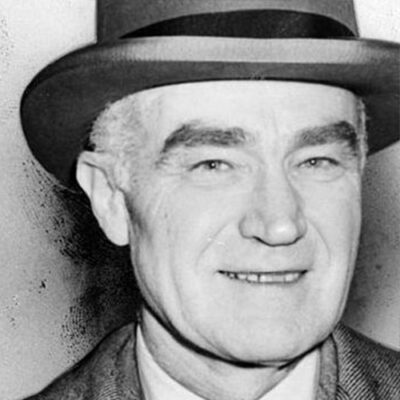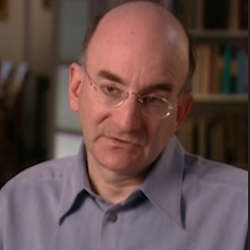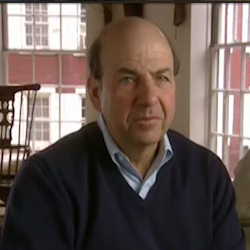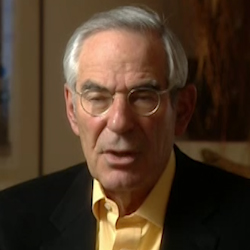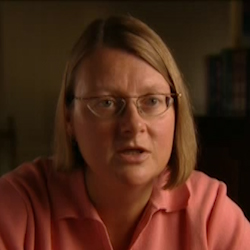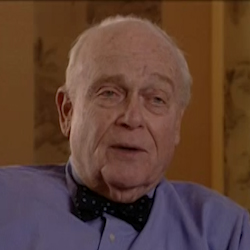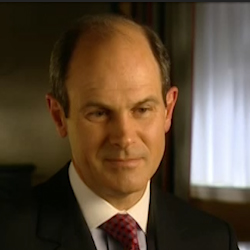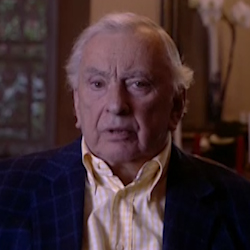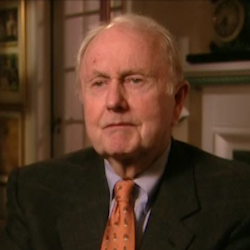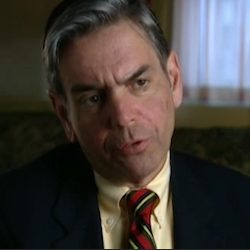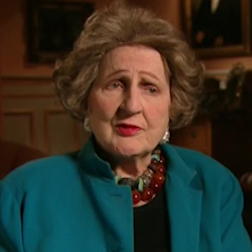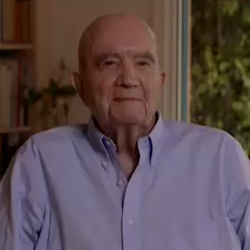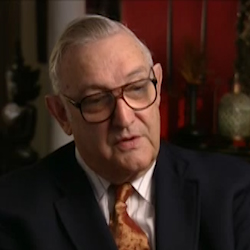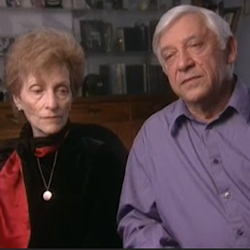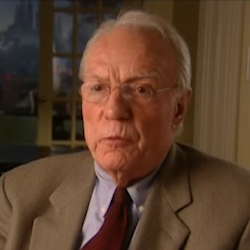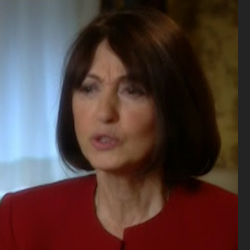Speaker He managed to just sort of periodically put that NSCLC beats me. I mean, that’s what makes this event. So we’re rolling.
Speaker And I’m just going to say it by saying it is Tuesday, April 29. This is the. First tape of our interview with Dan Okrent. For the Henry Luce Project for American Masters. And. Before we get to some of the more specific stuff, traffic general questions, and the first one is that it’s had struck me.
Speaker That when you talk to people who are like under 40 years old. Present company excluded. I don’t know who Harry Lewis is.
Speaker He even got a postage stamp and I still don’t know who he is.
Speaker So. Because we’re hoping some of those people are going to be watching this show. What do you think are some of the more more important things to convey about.
Speaker I think that there are two things that distinguish lives. One is the absolute level of innovation. His first three magazines, there had never been anything like time. There had never been anything like Fortune. There’s never been anything like life. I mean, this is the sort of thing that doesn’t happen. Very many fields where somebody invents not just one great thing, but three great things. And it really, though, people don’t think about how magazines are made. If you look at any of them and you look at what preceded them, you see how revolutionary he was. The other thing is his role in the larger culture, just as this figure who arrogated to himself the responsibility for the right to speak for America. Speak to America and speak for America, which doesn’t happen at all any longer. It’s a corporate age we live in then. That was a person who is an embodiment of the corporation, of his own corporation and the embodiment of its views.
Speaker What? How did he go a little further into the second quarter?
Speaker How did he.
Speaker Well, I guess taking a backward step. What was his vision of war for America and how did he embody them or propagate propagate vision or.
Speaker I think is kind of hard to encapsulate one vision. Although he did see America as a beneficent force for mankind, not in the world, necessarily, not just in geopolitics.
Speaker But this was I think it arises from the missionary parents or something that that there was a a role that America and that the idea of America could play to make it a better world. It wasn’t right all the time. And some of the directions he went, I think, personally were nuts. But he had a fundamentally optimistic, positive and generous view.
Speaker What? You freak, or someone closer attention. We did not transpose books in the background. I think it’s. Well, I think it’s funny, too. I just I looked.
Speaker Well, what importance do you think he and his magazines during his time? What importance do you think they had in the sort of cultural landscape during the.
Speaker I think that his magazines, in his time particularly, and I worked for many of his magazines, not in his time, were hugely important. And you could almost go magazine by magazine to explain it. The one that. I think in the larger sense, was most important was life in its period as a weekly magazine started in 1936 in pre television era. It told Americans what the world looked like. And it did so in an incredibly honest way. It was the first one to show dead soldiers in World War Two. This was an absolutely unheard of thing to have done. It made the war, in that sense, extremely real. And, you know, every Friday afternoon, mail came, you know, it was like, my God, here is 60 Minutes.
Speaker And Tom Brokaw and David Letterman. And it’s all in one place. And I’m getting my world in this package was an extraordinary thing to do.
Speaker What about.
Speaker You when you were younger, did you did you get life?
Speaker Yeah. I have absolutely read life as a kid who came into my house. I mean, when you have to remember that that life in the 1940s, 50s and into the 60s had a circulation of nearly eight million copies every week at a time when the population of the US was less than 200 million, divided by the number of households, the number of people in household and levels of literacy. It was everywhere. You know, there’s a book by Calvin Trillin in which he writes about a classmate of his and his who was on the cover of life. And he said that’s hard for people to understand today, that being on the cover of life in the 1950s was like being the lead story on all three network news broadcasts at once. It was the mass media.
Speaker And for you personally, what did you. What was your relationship?
Speaker Well, I think that it took me elsewhere in the world. It took me around the world to places that I hadn’t been. And what I say around the world, I don’t mean simply in the physical sense. It took me in to science and it took me into an airplane that’s ruining what I’m saying right now.
Speaker So for it to go.
Speaker Right now, it’s the combination of high and also we’re we’re in the back of the buildings where I’m 90 Second Street. There’s no third traffic because the park is right there.
Speaker That makes a difference.
Speaker Where it was. What do you want me to say? Well, here’s the script now. Just go back and let’s just talk going around the world about what it what it did for you.
Speaker I remember life coming into our house. I grew up in Detroit in the 50s. On Fridays, I’d come home from school and I’d pick up Life magazine. And it took me round the world and took me into corners of of non-physical worlds, into science and business and sports and culture, all in the most accessible pictures. It was also a common language because my father. You know, my father is a lawyer, my mother, the teacher and the three kids. I when I was eight, we all could share the language of these photographs. The photographs meant that they had the same ability to reach me as they did to reach my father. Very, very rare.
Speaker And I think it created in many ways a national conversation that there were so many households who were looking at life every week that way and so many members of each household, that there was a commonality between my house in Detroit and somebodies somebodies place in rural Georgia and somebody living on top of, you know, high rise in New York City.
Speaker What about Tony?
Speaker You see time. We didn’t like to. We were a Newsweek household. And I think it’s certainly it probably is still the case. But back in the 50s and 60s, there was a real division between the two. And I know why. I know how we became a Newsweek household.
Speaker Because Newsweek was very early supportive of the civil rights movement and that distinguished it from the Republican time. Now, the Republican ness of time was very different kind of Republicanism than we know today. And I think we lose by any standard except on the issues of China related to China as a liberal. People who think of me as a conservative or right winger are totally wrong. He’s a liberal in a very grand and positivistic American sense. And ours was a liberal Democratic household. And, you know, there was a certain kind of Republicanism at the time, but there was.
Speaker There was that Newsweek did this other thing that sent us there, I guess it’s interesting you mention that a lot of people we’ve talked to in our own research kind of claim that loose really was, I wouldn’t say, a pioneer, but he was an early supporter of civil rights in his in his magazine.
Speaker Yeah, but not not aggressively. So at least we didn’t perceive it as such. I remember a a Newsweek cover in the early 60s. I think Peter Goldman wrote it, in fact, that, you know, and black America, that was just a very, you know, kind of a declarative thing that, you know, time was still doing, you know, a picture of a person on the cover every week, a little bit different. And the pick of the person was as likely to be the chairman of some corporation. You’ve never heard of it? No time didn’t really enter the culture as the culture until the late 60s and early 70s. It was a very different kind of magazine in the way that represented itself to the world.
Speaker Well, that takes me to my next area, which was which is what was new and different about?
Speaker Well, it believed it knew everything that had this absolute surety of tone. You read those early issues where you sometimes wonder, how do they get off saying these things? But it was said with such confidence and I think that remained. Voice for decades and was purely Lucien, that there was this supposition that we know what we’re saying. And every piece of it led somewhere. And there’s a famous aphorism about a time story that was uttered by Manfred Gottfried, who was an important editor there in the 30s, who said every time story must start nowhere, go somewhere and sit down when it arrives, and it’s the sitting down when it arrives that was in the loose magazines like hadn’t happened anywhere else before.
Speaker Now, this is what you should think fundamentally is what it was saying was taking information from a variety of sources in the early days before they didn’t have reporters.
Speaker They just rewrote other newspapers. And making this declaration about the world was really a grand and nervy thing to do.
Speaker What. What about.
Speaker It’s a piece of land.
Speaker Well, I think there’s much the question about whether Henry Luce was good for the English language is a different one altogether. If you believe in colorful, I suppose you could say it’s God. But the you know, the famous parody of Wolcott Gibbs is pretty backward round sentences until real. The mind is really perfect. The writing sometimes is horrifyingly bad. And the Knot’s words, you know, the combination of putting two words together into a single retime editor know one term is nutty.
Speaker I understand why he did that. Creating a voice means that when you speak, people know that it’s you who’s speaking. What’s astonishing to me is that some of the writers who were working for him in those days were some of the great prose stylists of the 20th century who somehow found a way to be themselves, I guess of other names weren’t on the pieces, but found a way to use their skills in the context of this Tiny’s, of this Lucien language of his own.
Speaker It probably wasn’t and it probably wasn’t that interest. Oh, no, no, actually, it was interesting. Try to help. Let’s talk about sort of what the purpose of that.
Speaker The purpose of that language, I believe, was the same way that we all want to represent ourselves to the world so the people know who we are. That when time was speaking, it was no one else but time you knew that voice. No one else could do it. No one else would presume to do it. And it didn’t matter whether the writer was the young Alfred Kazin or the young James Agee or the incredibly right racist Leonard Goldsborough. They all sounded like time. And that’s a wonderful thing and it’s a horrible thing at the same time.
Speaker What about the whole departmentalized the whole back of the book? Was that it enough? Was it a time innovation? I believe so, but I’m not certain. Yeah. What was its importance to the magazine?
Speaker I don’t know. I mean.
Speaker You know that there’s some things that those of us in the magazine business this late in its development see take as such. Self evidences are so obvious that you divide a magazine into a front of a book. Back in the book, in the middle of the book, and that certain kinds of things go in each place. It’s just, you know, you have a body and you put the head on the top and the legs on the bottom and the torso in the middle. It seems so obvious now when Luce and his colleagues invented it, and I’m sure it wasn’t. But I can’t imagine a magazine, a modern magazine living without it. So if indeed they invented it, they did a pretty extraordinary thing.
Speaker And what about.
Speaker And they even say so, they even admit that. Objectivity is not necessarily a goal of time, right?
Speaker I think that the journalism school notion of objectivity or the German profession, journalism profession, notion of objectivity is misunderstood by a lot of people. It’s the distinction between objectivity and fairness. Fairness is an admirable and achievable goal. Objectivity is sometimes admirable and rarely achievable. And I think Lewis recognized this. Not that he was always fair, but he was pretty fair.
Speaker That plane. That’s the other problem. But being up high. Yes.
Speaker Prosumer good. Well, you know.
Speaker It did have a bias, which is why a lot of families like yours decided, you know, it was seen as a Republican Journal and that kind of thing.
Speaker How did it had no guidelines, no editorial. How did it convey its bias?
Speaker Well, magazine compact convey its bias and a wide variety of ways. I’m beginning with, you know, what he put on the cover. Who do you put on the cover? Whom are you celebrating? And then the you know, the simple presentation of tone in the 30s, particularly time could be incredibly snide and smart ass and nasty. And you did it. There was no subtlety to its representation of its positions at all. It didn’t need editorials because an editorial was built in to not every piece, but many, many pieces in any given issue. I can. I don’t have to say to you that I’m giving you an editorial to say that I think that, you know, that, you know, this really loud, this lousy medium of television is a waste of our time editorial. But you know what?
Speaker I think it’s it’s just it’s in the DNA of the magazine. It comes out everywhere. You know, there was this great struggle in the late 30s between, you know, the editors were all on the right and the writers were all on the left. And, you know, somehow something came out. I mean, loose hired people whose politics were wildly divergent from as he worshipped people whose politics were widely divergent from his. But out of this turmoil came the magazine that he wanted. Do you know that poem about the researchers? You know, some of us think we’re working with Stalin. Oh, it’s hilarious. It’s a recent. I could find it for you.
Speaker Oh, I thought you could recite it for. I used to be able to. I’m going to run. What was? How influential do you think his editorial bias or his views were on the public at large?
Speaker Yeah, I think that at certain times in his career, he had an enormous influence on the American debate.
Speaker I think the Cold War is probably the most visible example of that, where the the drawing of the lines of after the conclusion of World War Two happened faster, more efficiently, and probably arched rather more indelibly than they should have been by Luce’s aggressive support of the nationalist Chinese, his anticommunism and a variety of other things, World War Two itself.
Speaker Now, he you know, he I think he played a big role in moving American attitudes to a pro-war as he moved himself to a pro-war position. And I’m sure there are many other examples about the power that comes from owning and being the editor in chief of three magazines at that time of such enormous reach and influence was an enormous, enormous.
Speaker Imagine, imagine group Rupert Murdoch without competition. Is that a person with influence? Not to lose was Murdoch, but Luce felt what he felt as strongly as Murdoch feels what he feels.
Speaker And the difference between them is, well, you know, Murdoch is a crazy right wing idiot. But it’s not going to help your film, man, you know, is he I mean, is he more or less equal in. Influence? Well, no, because there too many voices now, I mean, Murdoch lives in, you know, there are four television networks, broadcast networks, then there are the cable networks and they’re the print media. There was no television then. National radio was more of an entertainment medium than it was an information medium. There’s a lot of information on it. But it was not the family gathering to see Walter Cronkite as we had in the 60s. So this guy, he was in a in a position really that I don’t think has been duplicated nor ever will be duplicated of having a variety of organs, in this case, three three magazines and his newsreel company in which his view was permeating American life.
Speaker We’re talking too fast. It’s more than that, but it’s got energy. That’s what we like. Talk about fortune. One of our favorite hobby, fortune to be conceived.
Speaker Well, it can. First, out of the enormous success of time that this kid, you know, who starts time when he and Patton, there were 25, 26 years old. And then, you know, it’s this enormous success from the beginning. And you begin to feel that you can do other things. And the story of American business, what she wanted to tell had not been told in a way that he imagined it could be told. So he has this idea that comes up that some other colleague, some colleagues developed for him in 1929. And the you know, the go ahead decision is to be made in the fall of 1929, you know, and then the crash comes. There’s one memo that somebody wrote at that time saying, you know, I think we should still go ahead, but we should be careful because this this economic downturn might last as long as a year. Well, of course, it lasted nine years and right into the teeth of this.
Speaker He published not just a magazine in the first issue of his magazine, February 1930. That means he was prepared for publication in November and December of twenty nine. Right out of the crash’s just happened. People are jumping out of windows, the bread lines are forming, the people are selling apples on the street. And this guy says not only this, produce a magazine. Let’s produce physically the most lavish, the most glamorous, the richest magazine in the history of the world, which is what it was. And it’s an amazing thing. They’re selling for a dollar a copy that’s equivalent 14 dollars today.
Speaker And this was right after the crash. I mean, the arrogance of this and the confidence of this, but it became what he said it was. It told, of course, much more than the story of American business. I think that fortune of the 1930s from its first issue in February of 1930 until the beginning of World War Two is the greatest magazine ever produced in this country. It had the best writers, the best photographers, the best illustrators. It was printed on the best paper. And it had a presumption of of of what it could do. That had no limitations at all. So it’s filled with stories that have nothing to do with business. It has stories there, stories that simply explain an aspect of the world that we’re living in in great and thrilling detail. It’s a great, great thing that he did the fortune that he comes out of World War two with as a much paler magazine. And it is a much more of a cheerleading magazine for American business. And I think shows where Luce had gone and his old lot in his own life. You know, the 1947 fortune is that of a tycoon, which he was the 1930s. Fortune is that of a man who was just incredibly curious about the world and thought that he could present it better than anybody else.
Speaker What?
Speaker When you mention that he thought the story of business wasn’t being told. Well or appropriately, what was it that he thought? The their the business narrative should be.
Speaker Well, I. This is some positional that probably people could address this better than I, but the representation of American business circa 1929 is Babbitt. Sinclair Lewis writes, this novel that absolutely sets up creates a word in the language of a narrow, unimaginative, limited person who represents the American business man. And, of course, that, like all all such stereotypes, was, you know, miles from the truth. Luce knew that. No.
Speaker Did he ever stop and think, damn it, that Sinclair Lewis has ruined it for now? I have no idea. But he saw business as being not the story of of individuals so much. Although he profiled individuals, but of the the it’s the story of the collaboration of thousands of individuals to create narrative, to create narratives in their own lives and to create narratives in their businesses. Time is, meantime, following a great man theory. That’s what they’re doing on the cover every week. But fortune was very, very different. It was never about people. It was about common effort.
Speaker And some of the common effort was bad. You know, sometimes they’re writing about fascism and sometimes the common effort is spectacular and the unite here, it heroic aside certain people and certain things. But it was it wasn’t about the individual.
Speaker Speaking of which, we all hope that come to that you just mentioned.
Speaker Tell me briefly about time and its use of individuals to tell you tell.
Speaker Yeah, I think that the use of of of putting a person on the cover every week, which time did I believe, with very few exceptions, for more than 40 years. It was just it was always a portrait on the cover. It is an affirmation of the great man theory of history, a great man, a great woman. It says that the events of the world, our influence dictated controlled by people of great accomplishment, sometimes of great evil. You know, the old story is still being fought in the offices of time. Who should be the person of the year? You know, Hitler was Person of the year. Niarchos, he was great in the sense of being good. But he was great in the sense of being incredibly influential over the news. And that’s what what Luce saw. That comes clearly in the covers. These are the people who are defining our times 52 weeks a year. We’re gonna give you the 52 people who matter. Now, you get inside the magazine. Are many other things going on. But there is that first declaration that says these people are the people that you should know about.
Speaker So let’s talk about it. What are some of the innovations of Fortune magazine? For example? The concept. But you know quite a bit about the cover.
Speaker Well, the covers, probably they were not revolutionary in the sense that they did not convey the content of a story inside the issue. And that’s, in fact, probably closer to what magazines had been. But in finding the artist to do them and saying to the artists using the imagination, go to creative places that we haven’t done. No one was doing that.
Speaker It really if you took the word fortune off the top of the cover of these magazines from the 1930s and you showed show them to any group of reasonably sensible people and said, what is this magazine? They say it’s an art magazine. It was a business magazine, but it was putting the work of the greatest painters and illustrators on the cover and letting them do imaginative and wonderful things totally. Not only unprecedent unfollowed. I think anybody’s ever done it since it was a. They’re just they’re beautiful. They’re absolutely beautiful. I mean, it was Covarrubias. It was Diego Rivera that a cover form in 1932. You know, we’re the world’s most famous communist artist. You know, this is the conservative Henry Luce. But no, give me things that are great.
Speaker What were some of the other churches in?
Speaker You know. What are some of the other?
Speaker Innovations for.
Speaker Even if they’re not, no, you know, people talk about the contribution, the the revolutionary contribution made by the weekly Life magazine in photography, there’s no question that it did make one. But I think that it happened first in the pages of Fortune notes that several things going on, the quality, the photography itself, the, you know, the taking. Margaret Bourke-White made her reputation because she could as a Fortune photographer before there was a Life magazine, because she could take a picture of a machine and make it look gorgeous. She got the quality of photography, a new style of photography, choosing photographers who had not worked in journalism before, but who could make such a contribution and then printing it on this paper that is so creamy you could eat it. I mean, just this delicious stuff, it still looks great. You know, 70 years later. So in that physical sense, that was a real innovation. The the fortune, what they called it fortune, a company story. You know, the story would be Radio Corporation of America, part one. And it would be three months, just everything about this. Now, you would think, well, do I really want to read about the Radio Corporation of America?
Speaker Well, it’s being written by Dwight McDonald or James Agee or Archibald MacLeish or John Kenneth Galbraith. It might have some things that you wanted and they were told his narratives. It was a real major step forward in narrative journalism long before that even became a term.
Speaker So, you know, I think that.
Speaker Simply in its ambition, whether expressed in the quality of the prose to quality photography or the quality of the physical package or the size of the physical package. And just nobody had ever tried anything like it before.
Speaker Can you pick one? This one. This one. Scroll through and tell some of the things that he’s through and tell us the things you like about it or the parts that you like. You know, I find extraordinary.
Speaker I wish you were an issue that I knew better. But I mean, to begin with, here we are. You know, we’re an issue that I knew better. But despite that, I’ll go to China. Let’s go. You going to your library.
Speaker And next thing you know better. Let’s do that. Can we do that? We cannot. I’m just winning with her.
Speaker Super Bowl. Actually, what if this could be useful for.
Speaker OK, yeah. This is June 1930, so the magazine is five months old and the things that are going on here, you can’t imagine. We’ll look at this. This is original art commissioned from Thomas Hart Benton, one of America’s greatest painters. Printed in full colored, glorious color, really well printed. You got a few pages later and you know, a story on the garment industry. And we’re going to learn everything there is about the garment industry from the people who are sewing it, to the people who are designing it. And to finally getting the suit into your house begins with this great spread of Margaret Bourke-White, pictures of spools of thread and the fact that anybody would even think to take a picture, much less a spread of pictures, of spools of thread. Nobody would do it.
Speaker I don’t know who wrote this story, but I’m sure no, none of them, of course, have byline. So this is something that Lewis didn’t believe in.
Speaker But it had to be one of their great writers, because this is the sort of an industry story like the company’s story where there just simply here’s the whole world and they would let a writer go on one of these things. You could report a story like this for six months. You know, James Agee’s Let US Now Praise Famous Men began as an article for Fortune. You know, it took him two years and he ended up writing a 400 page book and Stanford article for Fortune. Now, here, one of Bourke-White most famous pictures of, you know, shot down onto the tops of of of people’s heads in the middle of the garment district, hats in the garment district. No one thought to illustrate the world we lived in that way. That’s entirely original. No one thought that you could actually do a story called soybeans, which may be glue, milk, cheese sauce, varnish, axle grease, fertilizer, soap soup, buttons, artificial leather enamel. So, you know, the first two words aren’t that interesting. But then the cell gets kind of interesting. And I’m sure I haven’t read the story, but I bet it’s pretty damn wonderful of the advertising. And what does the advertising tell you about the ad? Look at this. The northern Pacific using the same gravure press on this creamy paper that.
Speaker Lucy’s using the editorial content going page after page after page, showing the luxury of taking the northern Pacific train, just the world does not this world doesn’t exist anymore and magazines like this don’t exist anymore.
Speaker Tells you who they’re going for. This is you know, it’s June 1930. Sixteen cylinder Cadillac. It’s a beautiful car, but a sixteen. So it’s a Cadillac. There are not a lot of people are going to buy that car.
Speaker But if you’re going to sell one to somebody, you would find that person reading Fortune. I can get carried away about fortunately, that’s what we’ve done. It’s just it’s just great.
Speaker You know, I’m I don’t know offhand how long some of these articles are, but I know that the three part series they did on Oh Young, who is the chairman of General Electric and very important political figure of the day, the three part series on RCA.
Speaker Each of those ran at least 30000 words.
Speaker That’s not magazine length. That’s nearly book length. That, again, shows a you can say an arrogance or you can say confidence that we have so much to tell you that it’s worth your staying with us. And it puts an enormous burden on the writers and editors. They’d better be damn good if they’re going to go on at that length. And he did get the best and he got the best. You know, it’s hard to get writers to work for you if their names don’t appear in print. So the only way you can get the best working for you are two things you can do. You can give them great assignments and say, yes, go off and spend six months on that story and you can pay them really, really well, which he also did. He always was the highest paying person in the journalism business.
Speaker What about his audience? I mean, think about what I think about, as you mentioned, this. It’s like. OK. So the businessmen learned that. But isn’t it? No. Not only was he asking a lot of his right. It wasn’t me asking a lot of readers.
Speaker You know, I think, you know, I don’t know this at all. But just as, again, suppositions based on my sense of him through his magazines, he thought his readers were like him. He thought that his readers were every bit as curious as he was. And we’re willing to be taken to as many places as he was. And I don’t think he ever asked more than that. And that only changes when he starts Sports Illustrated because he knew nothing about sports, cared nothing about sports.
Speaker But he saw that something was going on. And then in the early days of Sports Illustrated, for the first few years, you get this version of sports, which clearly does reflect him a little bit. It has nothing to do with the sports that America’s watching. Its yachting, its polo. It’s you know, it’s absolute lunacy to think that this is sports.
Speaker It was the one time, I think, where he thought he was reaching into an area that he didn’t know. He was unsure and he was stepping on some turf that was shaking beneath him. But the first three magazines, he just nailed it each time he was doing it for people who thought the way that he thought.
Speaker But OK.
Speaker But do you think I shouldn’t say he was doing the four people who were interested in the things he was interested in?
Speaker So he was not doing it for people who thought what he was thought. Don’t ever let that appear in the finished product.
Speaker Now we’re clear check.
Speaker But again, you think his readers read these things, or was it a status thing to have fortune?
Speaker Beats me.
Speaker I would like to think that if I were around then or if you were around then or anybody watching this were around, then you would want to read this magazine. It was that great. It was just it was the best magazine ever. Where people reading it. I suspect that they were.
Speaker It was not a large circulation magazine. And one was clearly based on the price alone. It was aimed at a very, very wealthy reader. So if you correlate wealth with education, which certainly then was more likely than it is today, then you would think that there would be a lot of people reading it. Were they reading everything? No, of course not. Nobody ever reads everything in a magazine.
Speaker How did you come to hire the. Relationship can start at.
Speaker You know, I just read that story recently. I’m not recalling the detail of it. She was you know, she was an incredible, incredibly aggressive woman. She was what she saw something and she wanted it. And she went out and got it. She had gotten involved in industrial photography. He saw some of the pictures. He was starting fortune. He put two and two together.
Speaker And out of that came the one of the great photojournalism careers of, you know, the history of the medium. Of course, she had the first cover of Life magazine and was probably along with Eisenstat, the, you know, the two most famous photographers at life for decades. But she first she was taking pictures of steel mills making steel mills look sexy and glorious.
Speaker No, you actually there was something in the piece that’s in that book on the cover that you mentioned. That everything from the covers was fair game except today, right?
Speaker That’s right. And then the first cover of life. Yeah. What do you make a magazine editors and artwork?
Speaker I really not. And we all have our our things, you know. I mean, there was an editor. Very distinguished editor of TIME who didn’t like the word cummerbund. And he would ask writers to come up with something else. Well, there is no other word for Cummerbund. That was his shtick. You know, somebody at Fortune in the 30s said you could do anything you wanted to cover, but you can’t put a dam and the Hoover Dam and the you know, not nothing that had a dam could go on the covering. You know, and everyone on the cover. And then along comes life. In 1936, the first cover, Fort Peck Dam by Margaret Bourke-White, because whoever was editing life had a different view of what was taboo than whatever whoever was editing Fortune.
Speaker So what do you know or what can you tell us about the genesis of life?
Speaker Well, at one point it wasn’t be called dime, but they were looking for a name for it. They went through so many nutty, nutty names. It was called Diamond. And somebody pointed out, you know, Harry, you might want to change the price sometime. That won’t work. The show, Magazine of the World was another title for it. And it was really up until the very last minute. They were changing the title about it. The idea came from Luce’s sense of photojournalism was something could be done with photojournalism. It’s at the beginning of the widespread use of faster film, 35 millimeter cameras no longer. You know, the stately framing of the square format camera. You could take the cameras, places that they hadn’t been before. You could shoot things you hadn’t been able to shoot before. And, you know, the historical moment came together with his appetite for yet another magazine.
Speaker And what was new and different about the life was the picture magazine.
Speaker It told if I was a teenager, you’re letting I know. Life was the picture magazine. It.
Speaker Revealed the world to you in photographic images. This was totally new. It couldn’t have been done before because of technology and a variety of technological things come together at the right point that that he’s able to do it. He also brings into the party, you know, he finds, you know, his first photographers. You know, it’s Margaret Bourke-White, it’s Alfred Eisenstadt, Carl Mydans. I mean, these are giants of the medium. And they grew together. The magazine grew with the photographers and with the country that had never seen any of these things before. Now, there were pictures and newspapers, but the transmission of pictures was slow and the printing wasn’t particularly good. And a picture taken in New York today was not likely to be in a newspaper in San Francisco tomorrow. There was, of course, no television. So if you are showing a world on a weekly basis and he’s sending people all over the world to see life, to see to see the world, in the opening words of his credo, written for him by Archibald, the cleanup, even though Lou signed it. Absolutely a revolution. Nobody ever seen it like before. They couldn’t keep the magazine in stock. They couldn’t print enough copies of it. It was far, far more successful than they expected. They lost tens of millions of dollars because it was too successful. The circulation grows faster than your advertising. To support the circulation, you still have to print the magazines and get them out there. So he’s losing money, but boy, was he happy to be losing that money because he had the biggest success in the history of magazines.
Speaker Do you think it surpassed any expectations of anybody?
Speaker It absolutely surpassed everybody’s expectations. If you look at the early documents about around the time that they’re they’re creating, I think they think they’ve got something good. But they had no idea it was a very expensive magazine to print so that the profitability never really reached the really high levels that would have made them say, oh, my God, it’s a gold mine. But the success of the magazine in terms of reader acceptance around the world. I think that, too, is something unparalleled. It’s still the case. When I was the editor of the monthly life in the Middle 90s and when life, despite our artist’s efforts, was really a shadow of what it once had been, I would be travelling in the Far East and I would be introduces the editor of Life and People with Salaf Life magazine worldwide.
Speaker Well, some of the technical challenges to get this to create this mess.
Speaker Well, you know, printing black and white photography by then wasn’t as hard as it was like printing color photography. You couldn’t do color at all. Color was hopeless. Color really doesn’t become a regular part of any of these magazines until the 60s. Until then, if you wanted to color well, see. Fourth of July as six weeks from now. So if we wanted to cover that has the flag on it. If we shoot it today, we’ll send it to the color plant. And by the time it’s done, we’ll be ready to put in the issue that week. You know, are these grand things that they did in the 50s? You know, the art of the Vatican, they were done weeks and months in advance. One of the reasons why Sports Illustrated couldn’t cover football and basketball, baseball with color is because you couldn’t print color quickly until the mid to late 60s. So he didn’t have that problem of the the largest technological problems had to do with getting a filmed image from one side of the world to the other really, really quickly. And then once printed, getting the magazine out really, really quickly so that the news isn’t horribly old by the time you see it. And throughout the magazine’s history, this is true of time as well. You know, the fleets of airplanes that were sometimes used. How are we gonna get the film from Los Angeles to New York? What will charter an airplane? That was still when I came into the business that was still going on. Churchill’s death, Churchill’s funeral life covered by taking the entire staff in a fleet of airplanes over to London and doing it on the airplane, on the way back, putting it together, pacing it off, editing the articles, you know, that you didn’t have the the the digital trend transmission, of course, that we have today, the physical distribution of getting the copies from the printing plant into the mail and into your mailbox or onto your newsstand within a few days was something that he had had to learn how to do with time so that by the time life came around, he could kind of piggyback onto that.
Speaker What were some of life’s more. I guess I’m talking about.
Speaker Thirty, almost thirty years while he was still alive. What were some of its more memorable or notorious features that you will, Pamela?
Speaker To answer that.
Speaker You know, publishing the old man and the sea, the entire text of a Hemingway novel in a weekly kind of newsmagazine, it’s pretty stunning. The magazine was on Press the day that John F. Kennedy was shot in Dallas and the cover, which was Roger Staubach. Few copies exist and they’re very valuable. Suddenly stop and then substituting into that issue the story, the cover, the only time that until 1993 that life ever ran the logo and anything but its regular read. The logo was black, that when Kennedy died.
Speaker The coverage of World War Two, I think more than anything, is what really made the magazine and distinguish the magazine, the great photographers who were risking their lives and some of whom lost their lives on various fronts of the war. And bringing the war into the American household on a weekly basis was truly astonishing. Same time, there’s some really embarrassing things they did in the war. How to tell a Jap from a Chinese. You know, if you look at this page. Yes, I know we were at war with them, but it is a reflection of a world I’m glad that we don’t live in. You know, the Chinese has a has a has a serene and handsome face, whereas the evil Jap with his little Snicker’s and sneers, I mean, just vile stuff. That was the culture to.
Speaker And why do you think? Because.
Speaker Not long after life. There was look, life wasn’t the only photo magazine. Why do you think it kept its.
Speaker It sort of kept its. Iconic.
Speaker Status in the culture? Well, I’d have to say that it’s because it was a better magazine. I mean, it looked at a lot of things that were pretty great in its time. But if you’ve ready tied up Aphrodite’s and by this Margaret Bourke-White, Peter Stackpole, Gordon Parks and, you know, elicit the greatest news photographers, the other guy, you know, even though Stanley Kubrick was a staff news photographer for look just isn’t going to be as good.
Speaker It had the muscle of the Time Inc. empire behind it. It had the history behind it. Look was a successful magazine for many years. But, you know, number two, if no one is watching his business, it’s always hard for number two to catch up and loose. Watched his business. And he paid more. So if there’s somebody who was doing a really good job, go get me that guy.
Speaker What was? Now, 41, he. The American century has a say. What do you think was the significance of.
Speaker The American Century essay is one of those things that is celebrated by journalists, political journalists who work in that building and by historians. And I don’t know whether anybody else really is aware that it happened or that it’s that meaningful, but it was whether he was the first or the most important one to to iterate the idea. I don’t know. But is this this again, this declarative sense of American possibility, American promise, American responsibility and arrogating to himself and to his nation this role in the world?
Speaker We still feel it. I mean, here we are 62 years later and there’s this a portion of our culture and a portion of our government believes that America is distinctive and has a distinctive responsibility.
Speaker I think that we can overstate the importance of his American Century essay to the fostering a bad idea. I think what’s more to the point is that he fostered that idea in his magazines. Week in, week out, page by page by page, four decades. Put the words on it in 1941. But it was always there.
Speaker Well, that actually kind of takes me to. Life’s. Post-War.
Speaker Kind of put it after the war. It seemed like, you know, finally the depression was over and finally the war was over and Americans were beginning to enjoy a measure of affluence and power. And it seems to me that life. That time, life, but particularly life. Seem to. Advance that notion and advance the.
Speaker A certain lifestyle. Lifestyle.
Speaker And I wonder if you have elaborate. I want to listen.
Speaker OK, beyond lifestyle, it’s like. This is what America looks like. This is what America ought to be. Focusing its attention on in terms of consumption, in terms of the nuclear family, that kind of thing?
Speaker Well, you know, I suppose it could be said that there was a celebration or an apotheosis of the suburban American mom, dad and three kids and dog and station wagon family. I think that we get that sense from the old issues of life, more from the advertising than from the editorial content. Yes, it’s there in the editorial content. It was really happening. The suburbs were exploding. The two car family was happening. Television was creating the elimination of kind of regional distinctions. And country was was becoming a different country.
Speaker But no one covered the civil rights movement photographically, as powerfully as as lucid.
Speaker No one covered the Hungarian Revolution the way that Luce did. The attention to what was real in the world was as intense as that which was idealized. Or in the case of Hollywood, which, you know, life and Hollywood had on a 35 year love affair, that which was a fantasy. The magazine was incredibly capacious and did a wide variety of things. Ed Thompson, who is the editor of Life Longer than anybody else for nine years in the 50s, he said, you know, life is like that kid next door, that really clever 13 year old. He’s really smart. And he he kind of knows everything, but he really would like to know more. And he’s tells you what he knows and such a nice way. And those weren’t exactly his words, but was pretty darn close to that. And. What would I mean to suggest there was really no limit to what it didn’t like, it did everything. It did everything. It was everywhere. And it came every Friday.
Speaker About Sports Illustrated.
Speaker How, if at all? Do you think that loose change the media’s role?
Speaker No know, nobody did particularly. But my problem is that I addressed that from the perspective of being in the media. So I know about his influence seen from inside the profession.
Speaker You know how certain things changed as a result. But I don’t think that it affects the country at large.
Speaker Perception he did that change.
Speaker I mean, I think that for better or ill, he did have a strong influence on the notion that journalism.
Speaker Could be both partisan and fair.
Speaker The British version is partizan historically, and that was not uncommon in the American press of the 19th and early 20th century. William Randolph Hearst being the outstanding example of that or the horrifying example of that. Take your pick. Luce felt what he felt as deeply, and he represented that in the pages of his publications. But he was fair. He believed that you gave the other guy a chance to have his view. Represented an honest fashion. He certainly was fair in his hiring policies. I get back to that. You know, the number of you know, when Whittaker Chambers began working for time still in the Communist Party and then he leaves and becomes, you know, the accuser. Yeah, a lot of pals in the Communist Party block at Time magazine. The late 30s was huge. And Luce knew that he had no sympathy for their political views, but he was interested in what they had to say. He knew they could write, you know, they could make his magazines better. And you have to respect him for not for hiring communists specifically, but for that openness to what other people thought, what other people had to say, which was even at his most jingoistic. It never showed in his hiring or even I think in his advancement of people. He had people were there were editors working for him who disagreed with him so violently on things and he would advance them if they did good work.
Speaker Is there anything you think we might be missing that you think he had one real flaw, which was his treatment of his wife in the magazines?
Speaker And I think that Claire loses a really interesting person who deserves her own something at some point. But if you look at the way that her public actions were covered in the magazine, he was deeply in love or he was deeply beaten up by his wife. That’s where I think he really fell down. He did not hurt her. Plays got preposterously positive reviews.
Speaker Her political activities got preposterously overweening, intense attention. But other than that, I think he was a pretty good guy.
Speaker OK. Let’s get right to him and then we’ll come around, OK?

